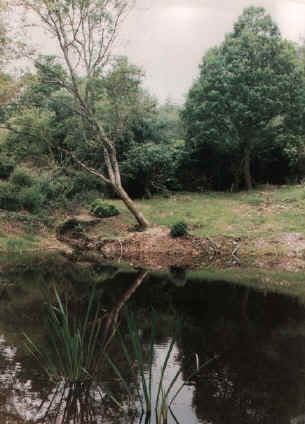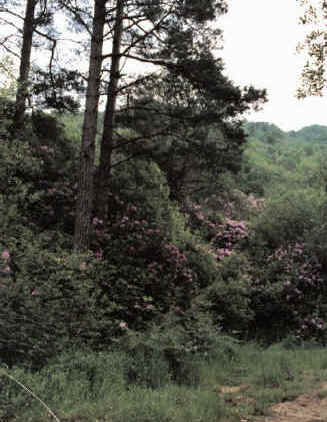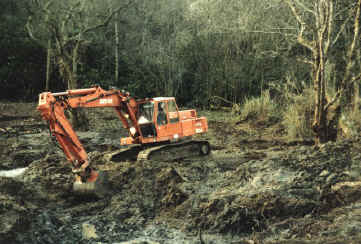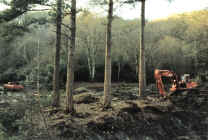The Wetlands
Restoration Project
Kingfisher Pond Restoration

Kingfisher Pond soon after restoration
Originally this area was the upper part of the northern pond, it was totally silted up. Apart from four Scots pines 14 metres high and one alder tree, the entire area was excluded from sunlight by very dense rhododendron. Wildlife Value Minimal. Rhododendron is a highly invasive species which is not native and renders areas ecologically sterile. |

Pond area completely silted.
Scots Pines are part of the original island
Intention To create a pond area with an island to function as a silt deposition site for incoming water borne sediments, thus preventing the silting of the Wetland and Lake areas. To construct an access road for excavation machines so as to allow future removal of accumulated silt. Method 1) Excavate silt to provide a maximum depth of 1.5 metres. 2) Pond sides shelved. 3) Construction of spillway using Gabion basket structures incorporating waterproof membrane, geotextile fabric, stone retaining wall and concrete base. 4) Lay two 500 mm x 6 metre "Armco" pipes into the Wetland to convey overspill; these in turn to be overlain by the surfaced access track. 5) Plant pond shores and hinterland with willow and introduce indigenous flora from recently established stock in the Wetland area. |

Silt removal
Result Engineering/construction work has been successfully completed. A range of aquatic plants have now become well established. Fish such as Brown trout and Bullheads attract kingfishers and herons . Palmate newts have been observed in courtship on the pond margins and large numbers of frogs and toads spawn in early spring. The pond is especially valuable for dragonflies and damselflies. Species include the Ruddy Darter which is regionally very scarce. The pond is also used for educational purposes. |
